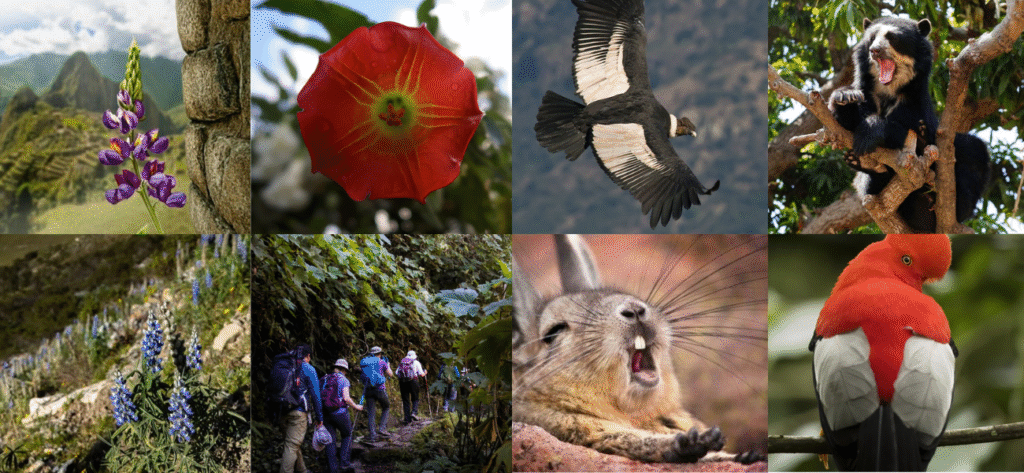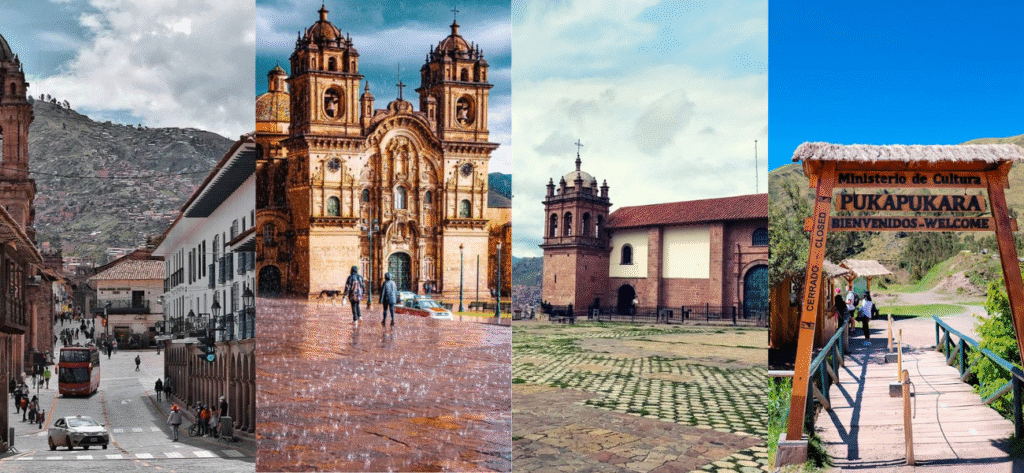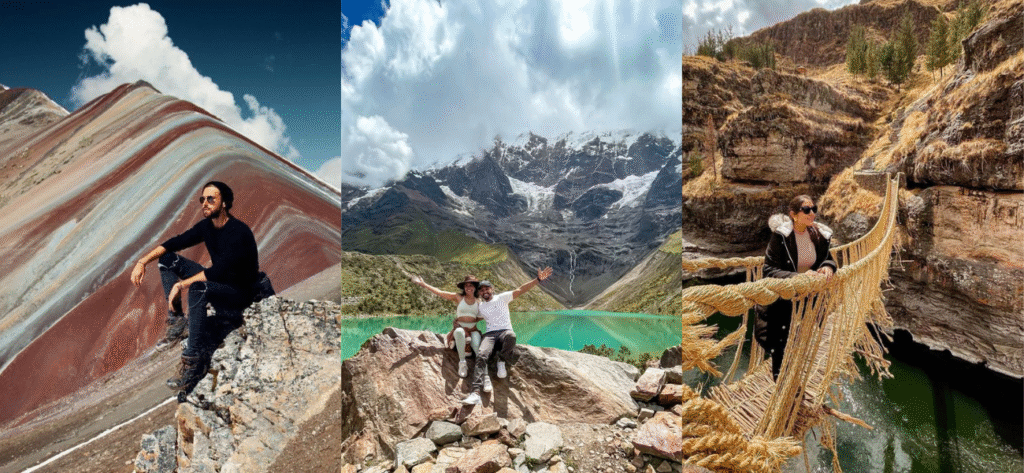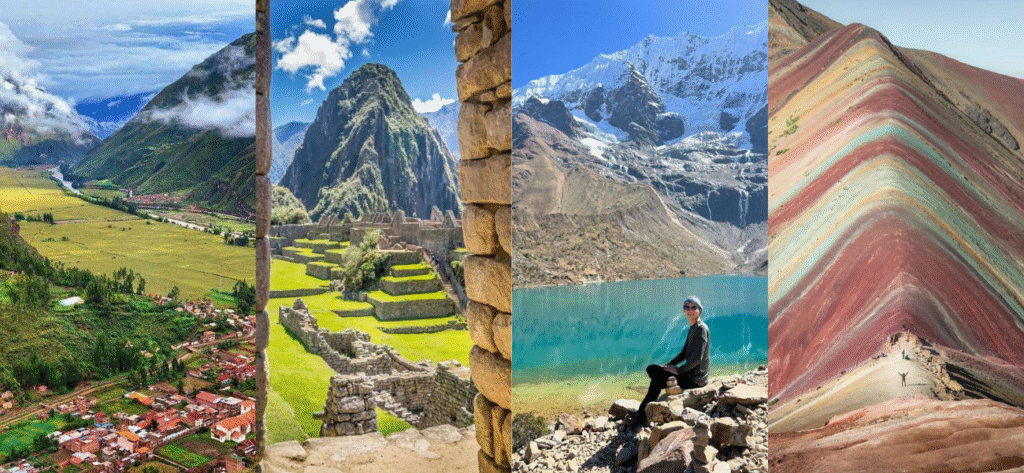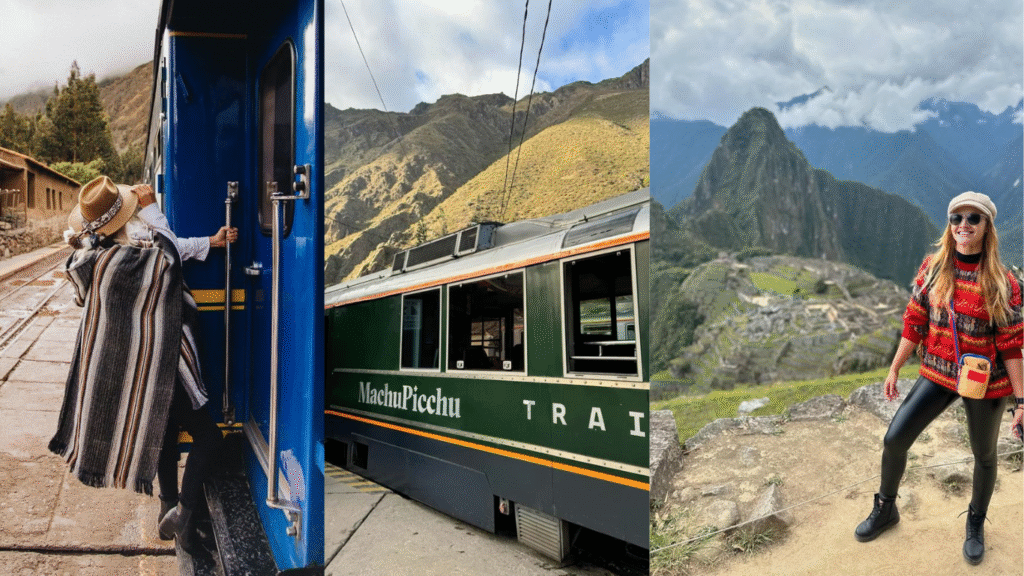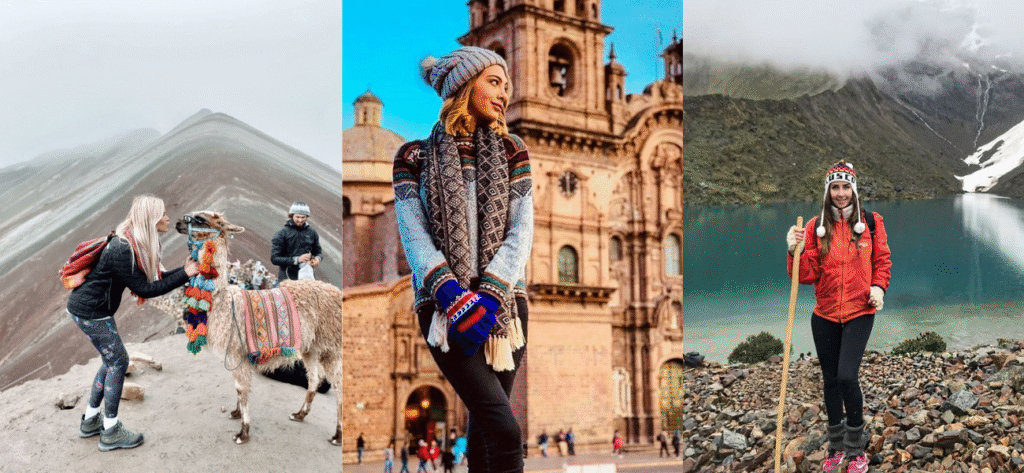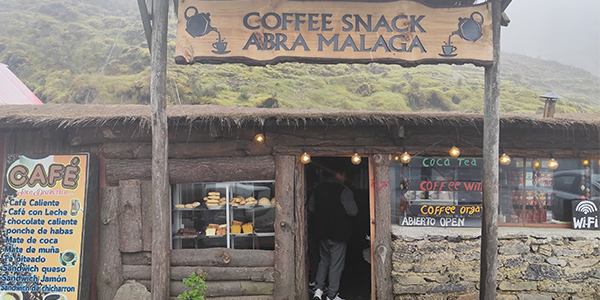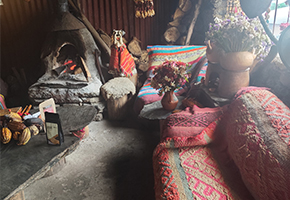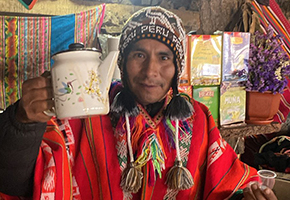Flora and Fauna on the Salkantay Trek: Nature’s Hidden Treasures
The Salkantay Trek is famous for its dramatic mountain landscapes and its route to Machu Picchu, but what many travelers don’t realize is that it’s also a paradise for nature lovers. From icy peaks to lush cloud forests, the trek offers a chance to see diverse flora and fauna that change with every step you take.
Ready to discover what’s waiting for you on the trail? Let’s explore the rich wildlife and plant life of the Salkantay Trek!
Changing Ecosystems Along the Trail
One of the most incredible things about the Salkantay Trek is how quickly the environment shifts. In just a few days, you’ll pass through:
- High Andean Mountains (cold, dry, and rocky)
- Cloud Forests (humid and full of life)
- High Jungle (lush and green with tropical plants)
Each zone has its own unique set of plants and animals.
Andean Flora: Hardy and Beautiful
At the higher altitudes, near Salkantay Pass (4,650 m), plant life is tough and adapted to the cold. Look out for:
- Ichu Grass: A golden grass that covers the Andean slopes.
- Polylepis Trees: Known as the world’s highest-growing trees, with reddish flaky bark.
- Andean Lupins: Colorful flowers that add a splash of purple and blue to the rocky landscape.
As you descend, the scenery transforms into vibrant green valleys filled with:
- Orchids: Especially in the cloud forest section. Some are tiny, while others are large and showy.
- Ferns: Massive tree ferns give the forest a prehistoric feel.
- Bromeliads: Tropical plants that cling to trees and rocks.
Andean Fauna: Wildlife Encounters on the Trail
While wildlife sightings depend on luck and timing, here are some animals you might spot:
Birds
- Andean Condor: The king of the Andes, with a wingspan of up to 3 meters. Spotting one is considered lucky!
- Torrent Duck: Found near fast-flowing rivers.
- Cock-of-the-Rock (Peru’s national bird): Bright red-orange and very shy, usually seen in the cloud forest.
Mammals
- Spectacled Bear (Andean bear): Rare and endangered, but the high jungle near Machu Picchu is one of its last strongholds.
- Vizcacha: A rabbit-like rodent with a long tail, often seen sunbathing on rocks.
- White-tailed Deer: More common in the lower jungle areas.
Reptiles and Amphibians
- Colorful frogs and lizards are often spotted in the humid lower sections.
The Importance of Conservation
Much of the flora and fauna you’ll see on the trek is unique to the Andes and the Peruvian cloud forests. Some species are endangered, like the Andean spectacled bear, due to habitat loss. Trekking responsibly — staying on trails, avoiding littering, and supporting eco-friendly tours — helps protect this fragile environment.
Tips for Spotting Wildlife
- Go early: Animals are most active at dawn and dusk.
- Stay quiet: Loud noises scare away wildlife.
- Bring binoculars: Especially for birdwatching.
- Ask your guide: Local guides know where to find hidden creatures and rare plants.
Final Thoughts: Nature’s Reward on the Salkantay Trek
The Salkantay Trek isn’t just a physical challenge — it’s a journey through some of Peru’s most stunning natural habitats. Whether you’re gazing at an Andean condor soaring overhead or admiring a delicate orchid in the forest, the trek offers countless moments where nature takes your breath away.
What you should do before booking Salkantay Trek to Machu Picchu
1. What is the Salkantay Trek, and how does it compare to the Inca Trail?
The Salkantay Trek is an alternative route to Machu Picchu, offering breathtaking landscapes, including snow-capped mountains, cloud forests, and high-altitude passes. Unlike the Inca Trail, the Salkantay Trek does not require a permit and is less crowded, providing a more adventurous experience.
2. How many days does the Salkantay Trek take to reach Machu Picchu?
The standard Salkantay Trek takes 5 days and 4 nights, covering approximately 72 km (45 miles). However, there are shorter and longer variations of the trek available.
3. What is the difficulty level of the Salkantay Trek?
The Salkantay Trek is considered moderate to challenging, as it involves hiking at high altitudes and steep ascents. The highest point is the Salkantay Pass at 4,650 m (15,255 ft). Proper acclimatization is recommended before starting the trek.
4. Do I need a permit to hike the Salkantay Trek?
No, unlike the Inca Trail, the Salkantay Trek does not require a special permit. However, you do need an entrance ticket for Machu Picchu, which should be booked in advance.
5. What is the best time of year to hike the Salkantay Trek?
The best time to hike the Salkantay Trek is during the dry season (April to October). The weather is more stable, with clear skies and less rain. The rainy season (November to March) can make the trail muddy and challenging.
6. What should I pack for the Salkantay Trek?
Essential items include:
- Hiking boots (waterproof and comfortable)
- Warm layers (temperatures drop at night)
- Rain jacket or poncho
- Sleeping bag (suitable for cold weather)
- Sun protection (hat, sunglasses, sunscreen)
- Water bottle and purification tablets
- Basic first aid kit
7. Is altitude sickness a concern on the Salkantay Trek?
Yes, altitude sickness can be an issue, especially at the Salkantay Pass (4,650 m). It is recommended to spend a few days in Cusco (3,400 m) before the trek to acclimatize. Staying hydrated, avoiding alcohol, and chewing coca leaves can help with symptoms.
8. How do I get to Machu Picchu from the end of the Salkantay Trek?
After reaching Hidroelectrica, you have two options:
- Hike 3 hours to Aguas Calientes.
- Take a 30-minute train from Hidroelectrica to Aguas Calientes.
From Aguas Calientes, you can hike or take a bus up to Machu Picchu.
9. Are there accommodation options along the Salkantay Trek?
Yes, most trekking companies provide campsites or eco-lodges along the route. Some upgraded tours offer more comfortable accommodations, such as glass cabins or domes. The final night is usually spent in a hotel in Aguas Calientes.
10. Can I visit Machu Picchu without hiking the Salkantay Trek?
Yes, you can take a train from Cusco to Aguas Calientes, followed by a short bus ride or hike up to Machu Picchu. This is the most popular option for visitors who prefer not to hike.
You must be interested
- Salkantay Trek to Machu Picchu
- Salkantay Trail 5 days 4 nights
- Salkantay Trek difficulty level
- Salkantay vs Inca Trail comparison
- Best time to hike Salkantay Peru
- Salkantay Trek tour price 2026
- Guided Salkantay Trek packages
- Salkantay Trek altitude and acclimatization
- Salkantay Trekking tours from Cusco
- Salkantay Trek full itinerary
Salkantay Travel Information
- Salkantay Trek Food: What You’ll Eat on the Trail
- Birds of the Salkantay Trek: Species You Can Spot on the Route
- Is the Salkantay Trek Dangerous?
- Salkantay Trek Altitude: Heights Along the Route
- Flora and Fauna in Salkantay Trek
- Altitude Sickness on the Salkantay Trek
- Salkantay Trek Difficulty: How Hard Is the Route?
- Salkantay Trek FAQs: Answers to Common Questions
- Best Time to do Salkantay trek
- Training for Salkantay Trek: How to Get Ready
- How long is the Salkantay Trek?
- Salkantay Trek Price: How Much Does It Cost?
- What Is the Salkantay Trek?
- What to Bring on the Salkantay Trek?
- Best Time to Do Salkantay Trek
- Your Insider’s Guide to Salkantay Trek
- Where is Salkantay?
- Salkantay highlights
- Tour Montaña de Colores con Transporte


